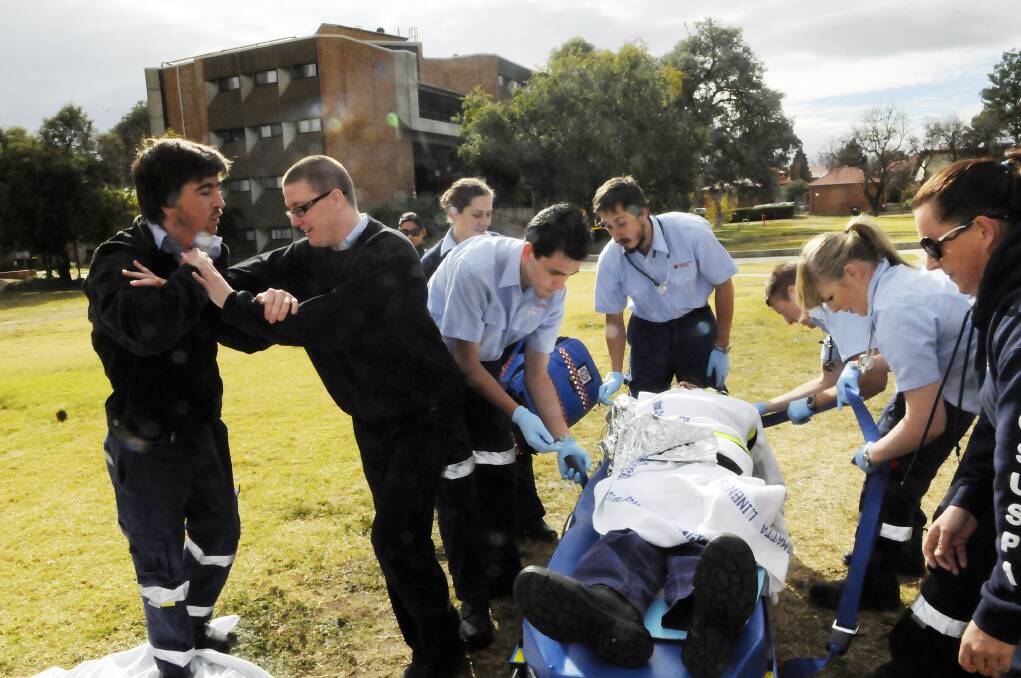AFTER a dramatic increase in the number of assaults against paramedics, Charles Sturt University is doing its part to keep future generations as far away from danger as possible.
Subscribe now for unlimited access.
$0/
(min cost $0)
or signup to continue reading
CSU has long trained its paramedics students in the best ways to recognise situations that could turn nasty – and try to avoid them.
Figures released recently show there has been a disturbing rise in the number of assaults against paramedics; 52 were reported across the state until May 4 – a sharp rise compared with the 15 reported in the same period last year.
Last year’s total of 60 attacks could be exceeded in the first half of 2013.
The NSW Ambulance Service and state government are working to reduce that number, but early training is also important.
CSU paramedics program leader and senior lecturer Joe Acker said the university gives its students the best training to handle difficult situations.
“When paramedics are injured on the job, it’s often because the patient is suffering a medical complaint, whether that be because of dementia or head trauma or maybe because they are a drug or alcohol induced patient,” he said.
“They can sometimes mistake paramedics as police officers or they might just be disorientated. We do our best to teach our students about situational awareness.”
Research into paramedics in dangerous situations shows the best way for them to handle it is to communicate effectively.
“We don’t teach them self- defence. There has been research that shows it actually does more harm than good,” Mr Acker said.
“We try to use sociology and communication training so that they can interact with their patients.
“You might have someone who is threatening suicide or assault, so they have to be able to try and de-escalate a situation.”
Mr Acker said that given the number of dangerous situations paramedics can find themselves in, he felt the number of assaults that occured was relatively low.
“I think it’s good that the media cover those incidents because any time any member of the public service is injured, whether it be police, fire or ambulance, it is sad because they are performing a duty to help the community,” he said.
“I think, though, overall the number of incidents is relatively low.
“When you think about scenarios with paramedics going into bars, being in Kings Cross or indigenous communities, these potentially violent situations, they are generally able to avoid incidents.”


